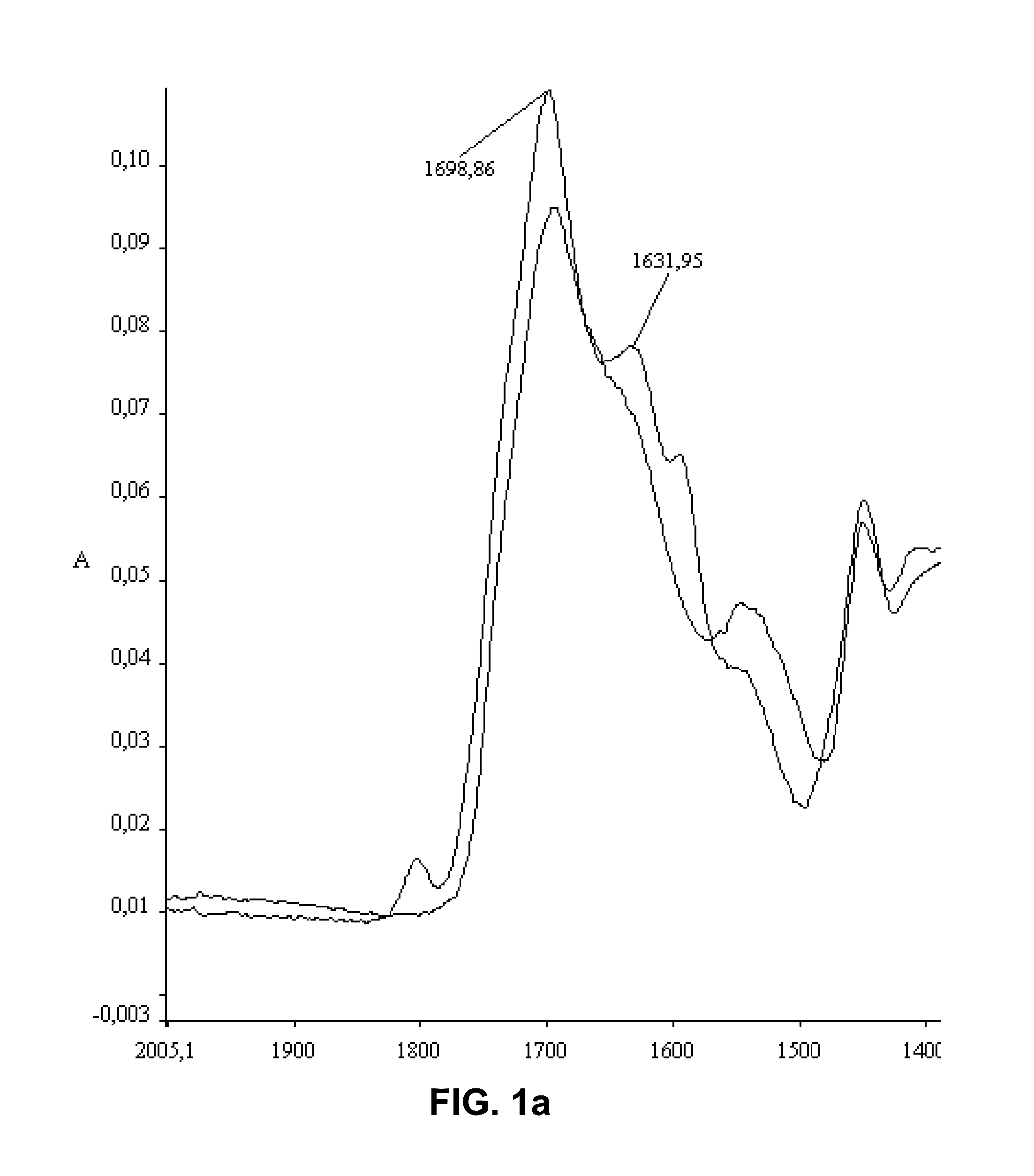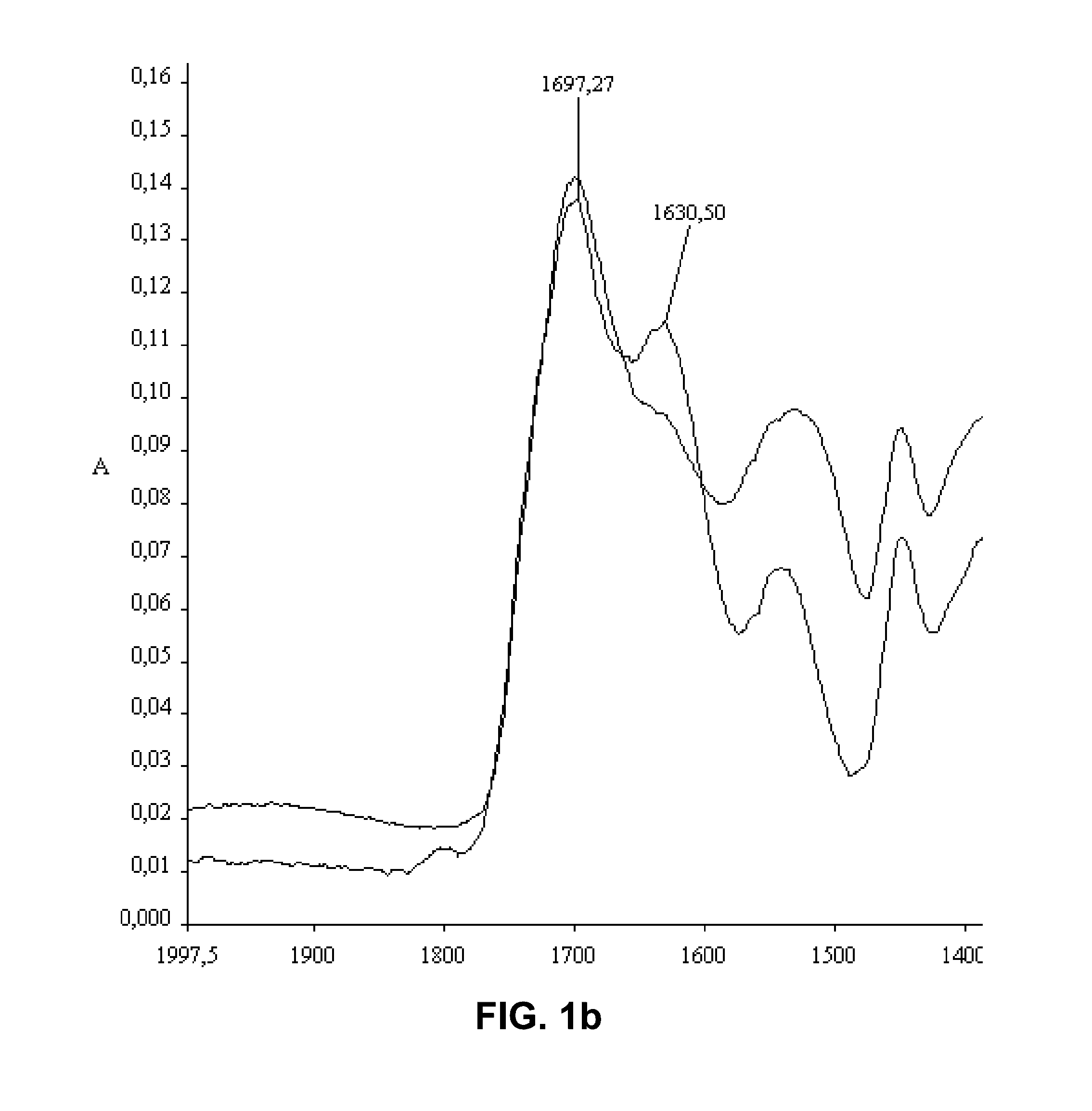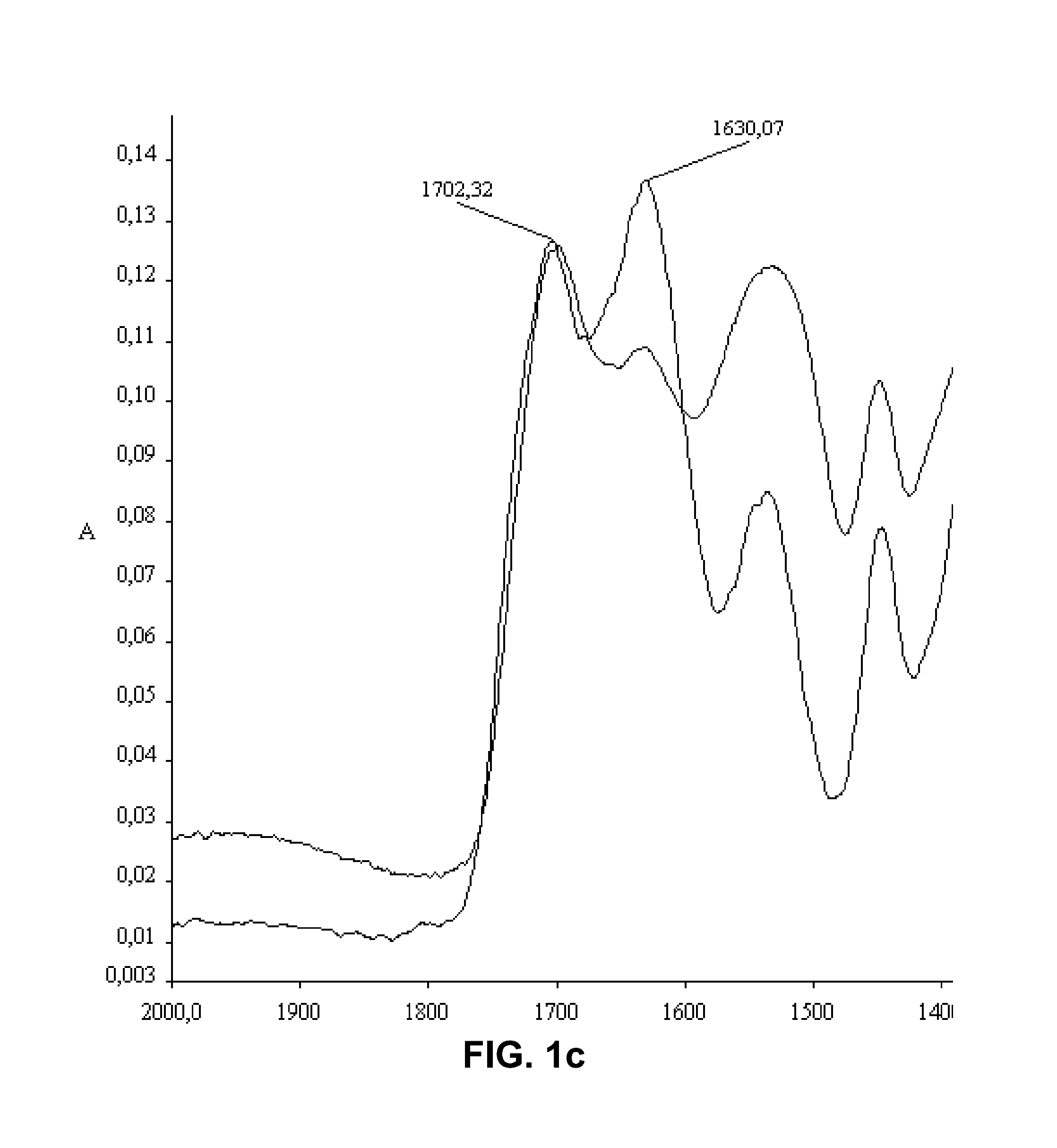Nanofibers with improved chemical and physical stability and web containing nanofibers
- Summary
- Abstract
- Description
- Claims
- Application Information
AI Technical Summary
Benefits of technology
Problems solved by technology
Method used
Image
Examples
example 1
Preparation of Clear and Electrospinnable Polymer Solution
[0064]Solution 1: 8 g of Polyacrylic acid (PAA); Sokalan PA110S 22% w / w in water
[0065]Solution 2: Polyethyleneimine (PEI); Polymin P 15% w / w in water
[0066]Ratio of PAA to PEI: 95;5
[0067]Experimentally, when solution 1 and 2 are mixed together do not lead the formation of clear solutions (which is an important requirement to obtain continuous nanofibers). The mixture of solution 1 and 2 leads to formation of a salt between PAA and PEI, referred to as “nylon salt formation” and leads formation of precipitates of the polymer i.e. formation of cloudy solutions. In another case, formic acid was added to the solution 1 before the mixing of solution 1 and 2. By adding formic acid at a concentration of 20% v / v to solution 1, clear solutions of polymer blends have been obtained. Thus obtained solution was stable and clear that was electrospinnable in to long, continuous and uniform nanofibers. It has been observed that the aminolysis ...
example 2
Effect of the Amount of Formic Acid on the Solutions Electrospinnability
[0068]Blends of Polyacrylic acid (PAA)—polyallylamine (PVAm) and blends of Polyacrylic acid (PAA)—polyethyleneimine (PEI) have been produced with different amount of formic acid as a co-solvent; the tested formulations have been produced by using the starting solutions 3&4 and 5&6 reported below, the solutions 3&5 have been further diluted with quantities of water and formic acid reported in table 1 and 2.
example 2a
PAA-PVAm Blends
[0069]Solution 3: 8 g of PAA (Sokalan PA 110S) 35% w /
[0070]Solution 4: PVAm (PAA-15C) 15% w / w in water
[0071]Ratio between PAA-PVAm: 95;5, final solid content of solutions: 23% w / w
TABLE 1formulations and characteristics of PAA - PAVm blendsFormicacid 90%Dilution waterFinal conc.addition tofor solution 3formic acidRecipesolution 3 (ml)(ml)(% v / v)CommentsA103.80Salt formationA20.73.15Clear solution -high viscosityA312.87Clear solutionA41.91.913Clear solutionA53.8027Clear solution
[0072]It can be seen from the comments in table 1 that there exists a minimum quantity of formic acid required to make a clear and electrospinnable solution of such blend of polymers; in this case it was 7% v / v. Further increment of formic acid concentration does not cause significant alteration of solutions.
PUM
| Property | Measurement | Unit |
|---|---|---|
| Temperature | aaaaa | aaaaa |
| Temperature | aaaaa | aaaaa |
| Fraction | aaaaa | aaaaa |
Abstract
Description
Claims
Application Information
 Login to View More
Login to View More - Generate Ideas
- Intellectual Property
- Life Sciences
- Materials
- Tech Scout
- Unparalleled Data Quality
- Higher Quality Content
- 60% Fewer Hallucinations
Browse by: Latest US Patents, China's latest patents, Technical Efficacy Thesaurus, Application Domain, Technology Topic, Popular Technical Reports.
© 2025 PatSnap. All rights reserved.Legal|Privacy policy|Modern Slavery Act Transparency Statement|Sitemap|About US| Contact US: help@patsnap.com



